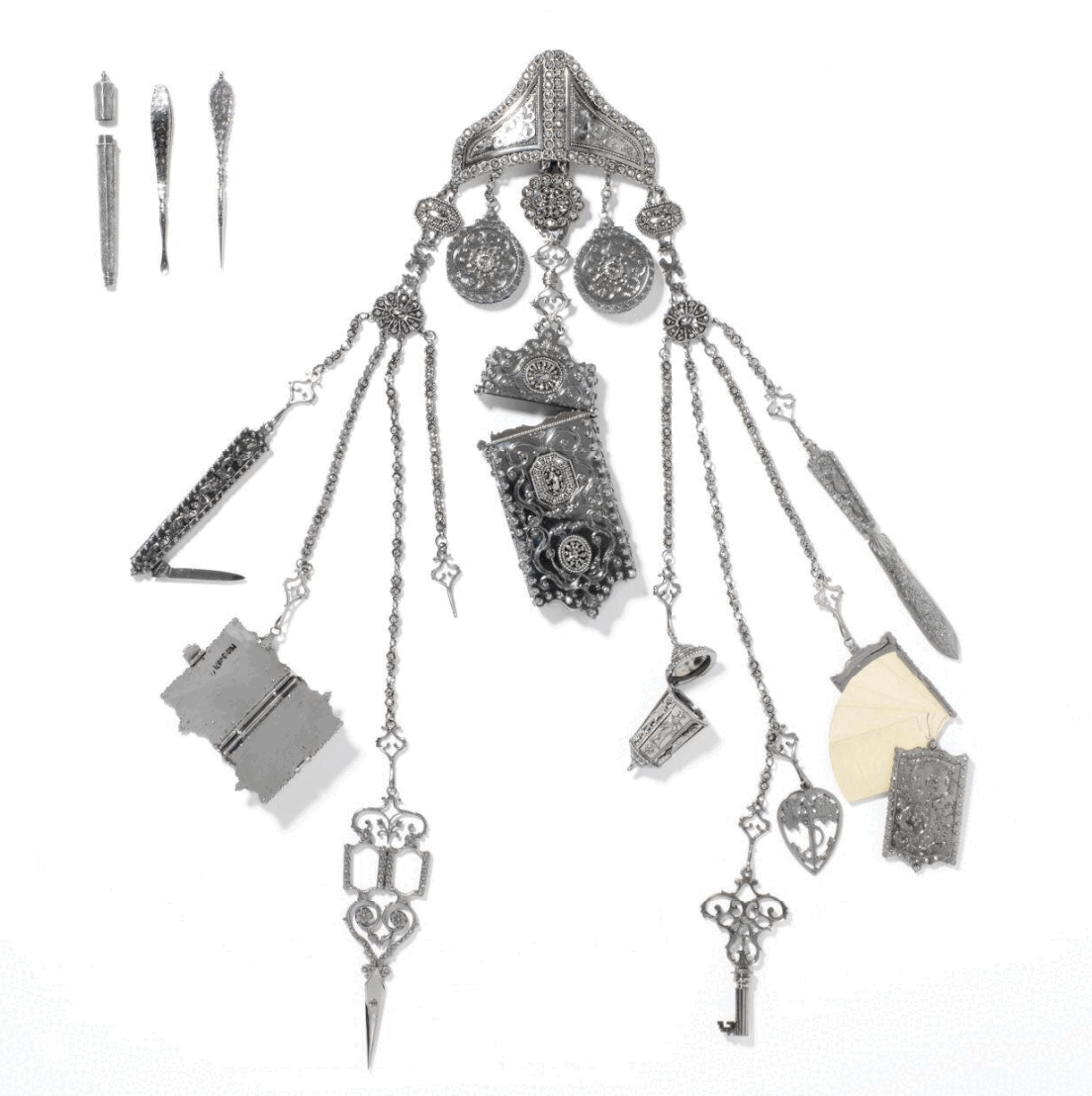
Cut steel chatelaine, England, about 1851
“I can assure you, Sir, that they (the noises) were a most serious annoyance to me; they distracted my attention whilst reading the paper, disturbed me at my meals, and, I believe, interfered with my digestion. But, Sir, when I recovered, and left my room, the whole mystery was explained, and what I say is, you will always find it so in similar cases. I then discovered, Sir, that my ghosts were none other than my guests. The clinking and clanking by which I had been exasperated, proceeded from a sort of band of steel chains, which my niece and each of the girls had dangling at their waistbands, with a miscellaneous parcel of keys, cutlery, and other hardware at the end of them. I asked what the deuce these things were, and was told they were called chatelaines. Chatelaines! Now, Sir, I do say that these chatelaines are utterly destructive to domestic quiet, and by no means elegant appendages to costume."
The term “chatelaine” has origins in medieval France, for the mistress of a household, and became associated with waist-belt chain of castle keys that a woman of such position would carry. The chatelaine went on to describe chains of various objects hooked to the abdomen, especially popular in the Victorian era. Chatelaines were varyingly utilitarian or decorative, holding objects like nurse’s tools, to sewing supplies, toiletries, perfume bottles, and good luck charms. From the advent of the term, the chatelaine had a symbolic entwinement with power and responsibility strictly within domain of the household.
Cataloguing a collection of these chatelaines showcases their variability by culture, material, and implements. It also felt important because in researching digital museum collections I noticed the lack of a single institution with a substantial collection of chatelaines, though they seem loaded with storytelling potential into historically women’s labor, class, expression, craft, and early consumerism. The chatelaine itself seems like a tree branch categorization of objects, unique and representative of its owner. The chatelaines visibility and probable loudness of utility objects reminded me of the modern day trends of “what’s in my bag?” videos, where women unpack their purses to a digital audience, and made me consider women’s complicated relationships of identity as tied to objects.